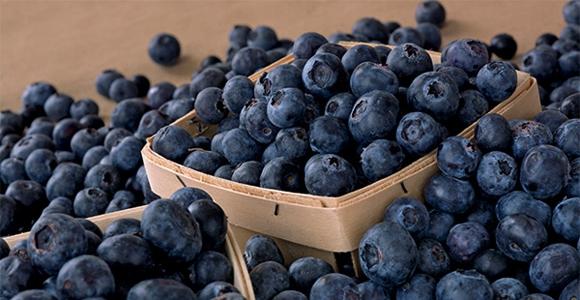The rabbiteye blueberry (Vaccinium ashei) is native to the southeastern United States. Its native habitat ranges northward from central Florida to eastern North Carolina and westward to eastern Texas and southern Arkansas. The highbush blueberry (Vaccinium corymbosum) is native to the eastern coast of the United States and is the type grown commercially in New Jersey, Michigan, and other northern states as far south as North Carolina and northern Arkansas. Southern highbush types resulted from crosses between the highbush blueberry and native Southern blueberries.
The rabbiteye blueberry differs in several ways from the highbush blueberries grown in northern states. The berries themselves, however, closely resemble those of the highbush, and the two are essentially the same in the market place. Rabbiteye plants are very vigorous, and yields are high in comparison with northern varieties.
Blueberry plantings are relatively expensive to establish when compared to short-term crops, but they generally remain productive for a long period of time. You should plan carefully when preparing to establish a blueberry planting. Carefully consider site selection, varieties, water source and quality, harvesting, and marketing.
Site Selection and Preparation
Rabbiteye blueberries require acid well-drained soils with a pH of 4.0 to 5.5. The optimum pH is thought to be about 4.8. You should take a soil sample to determine the pH and the nutrient content of the soil. As a general rule, blueberries grow best on land that has been recently cleared or never planted in crops. Blueberries do not grow well in soils high in calcium (greater than 900 pounds per acre). Plants growing on land with an improper pH may become yellow and grow poorly.
Avoid planting blueberries in soil containing large amounts of wood ash as found in windrows burned on newly cleared land. Burned wood deposits minerals and salts that raise the pH above the acceptable range for good blueberry growth. If windrows have been burned, sample such areas separately and apply sulfur as indicated by soil test results.
Soils with a native pH above 5.5 are difficult to adapt to blueberry culture, and you should avoid them. On the other hand, cultivated land that has been limed in the past may have an artificially high pH, which can be lowered by adding sulfur. You should work the recommended amount of sulfur into the soil six months before you plant the blueberries.
Low-lying areas with a high water table are not recommended for blueberries, but you can use such sites if the water table stays at least 2 feet below the soil surface year-round. If you plant blueberries on poorly-drained soils where the water table is less than 2 feet deep, you should form raised planting beds. The bed should be 8 to 12 inches high. Blueberries will not tolerate standing water or grow well in excessively wet areas.
You should kill perennial weeds in the summer before planting. This usually requires cultivation and using a systemic herbicide. Weed control is difficult in blueberries for the first two years after planting. Eliminating perennial weeds before planting greatly reduces later problems.
Irrigation
Blueberry plants require from 1 to 2 inches of water per week. Newly established plants have the most critical water needs and can be damaged by either over watering or under watering. Upland soils in the Gulf States region are well drained but have low water-holding capacity. Short periods (one to three weeks) without rain can stress blueberry plants severely. Irrigation during such periods is required for optimum plant performance.
Irrigation of producing blueberry plants during dry periods before harvest results in larger berries and higher yields. Also, irrigation in August and September will stimulate growth and fruit bud formation, thus increasing the potential yield for the next blueberry season.
A rapid decrease in soil moisture during dry periods increases the concentration of fertilizer nutrients in the soil solution, which may damage roots. Irrigation lowers the concentration of nutrients in the soil solution and reduces the risk of fertilizer damage.
Trickle irrigation is the most common system growers use. This is the most efficient way to distribute water to blueberry plants. The trickle irrigation system operates on low water pressure and consists of polyethylene tubing laid down the row with an emitter placed under each plant. The emitter discharges a calculated amount of water on the soil surface beneath each plant. The recommended rate is 8 to 12 gallons per week per plant, which may be divided into three applications. Water requirements increase as plants age and grow and vary due to soil type, organic matter, and natural climatic conditions. Most trickle irrigation systems are buried to eliminate deterioration from ultraviolet light and protect them from damage by animals or equipment.
The water source may be ground water or impounded water. Regardless of the source, the water should be tested to determine suitability for blueberry irrigation. To prevent the clogging of emitters, you should filter impounded water.
You should check water quality before planting to see if it is suitable for blueberry production. Mississippi State University Extension Service county agents or the State Chemical Laboratory can do this. Specify that the water will be used for irrigation of blueberries.
Source:
Braswell, John. Establishment and Maintenance of Blueberries. MSU Cooperative Extension Service. Retrieved 01 June 2010.
